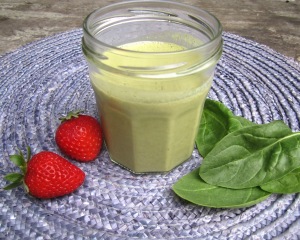|
Food
|
Types
|
Servings
|
Nutritional Benefits
|
|
Healthy Fats/Oils and Nuts/Seeds (raw or dry roasted)
|
Walnuts
Pecans
Almonds
Hazelnuts
Brazil nuts
Cashews
Pistachios
Sesame seeds
Chia seeds
Sunflower seeds
Flax seeds
Hemp seeds
Pumpkin seeds
Nut butters
Tahini
Extra Virgin Coconut Oil
Extra Virgin Olive Oil
Unrefined sesame oil
|
2-3 servings per day
A serving of nuts and seeds is 2 Tablespoons
A serving of fats/oils is 1 Tablespoon
|
Nuts and seeds are good sources of essential fats (Omega-3 and Omega-6), vitamin E, protein, B vitamin, beta carotene, minerals, and folic acid
Soaking nuts and seeds helps digest them better and increases nutrient availability
Coconut oil reduces inflammation, aids digestion and metabolism, and decreases risk for heart disease, diabetes and cancer
|
|
Whole Grains
|
Gluten-Free:
Quinoa
Millet
Amaranth
Buckwheat
Teff
Rice (Brown, Jasmine, Short grain, Long grain, Wild, black)
Contain Gluten:
Wheat
Rye
Spelt
Barley
Oats (oats don't contain gluten, but are usually always cross-contaminated with other gluten containing grains unless gluten-free certified)
|
1-3 servings per day
A serving is 1/2 cup cooked
|
Whole grains provide complex carbohydrates and fiber
Gluten-free grains are hypoallergenic and provide B vitamins and magnesium to help with digestion and balance blood sugar
Gluten-containing grains can be inflammatory and hard on digestion
Soaking or rinsing grains before cooking helps their digestion
|
|
Spices, Condiments, Supplements, and Natural Sweeteners
|
Unrefined sea salt
Peppercorns
Tamari, low salt
Vanilla, pure
Miso
Nutritional yeast
Dijon Mustard
Apple Cider vinegar
Balsamic vinegar
Sea Vegetables (Nori, Sea Palm, Dulse, Agar flakes, Kombu, Wakame, Hijiki, Arame)
Dried herb/spices:
Bay leaves
Cinnamon
Nutmeg
Coriander
Cumin
Oregano
Pepper (Paprika, Cayenne)
Turmeric
Fresh herbs:
Basil
Thyme
Cilantro
Dill
Ginger root
Parsley
Rosemary
Mint
Powders/Supplements:
Raw cacao powder
Maca powder
Spirulina powder
Chlorella powder
Protein powder (vegan, sugar-free)
Mesquite powder
Natural Sweeteners:
Raw honey
Grade B maple syrup
Coconut sugar
Maple sugar
|
2-4 servings per day
A serving is 1 teaspoon - 1 Tablespoon
|
Spices and herbs add flavor and boost metabolism
Sea vegetables provide amino acids (building blocks of protein), vitamin E, B vitamins, fiber, and minerals
Nutritional yeast provides B vitamins, amino acids, and minerals
Powders and supplements are ingredients that contain high nutrient value in small amounts
Natural sweeteners are unrefined and provide more nutrients than white sugar or artificial sweeteners, but should still be consumed in moderation
|
|
Dairy (Choose organic and grass-fed. Choose whole, low-, or non- fat without any additives)
|
Raw dairy
Yogurt
Goat cheese or yogurt
Cottage cheese
Kefir
Mozzarella
Parmesan
Romano
Feta
|
1-2 servings per day
A serving of cheese is 1 ounce
A serving of yogurt is about 4-6 ounces
|
Dairy are a great source of protein and calcium
Calcium-rich foods help immune system, fat metabolism, and protect against bone damage and breast cancer
|
|
Dried Legumes and Soy (Choose soy products that are fermented and non-GMO)
|
Garbanzo beans
Black beans
Pinto beans
Adzuki beans
Mung beans
Kidney beans
Navy beans
Cannellini beans
Fava beans
Lima beans
Split peas
Lentils
Soy beans (Edamame)
Tempeh
Tofu
|
1-2 servings per day
A serving is 1/2 cup cooked
|
Legumes are rich in fiber and complex carbohydrates
25% of their calories come from protein
Darker legumes contain antioxidants
Soak legumes overnight before cooking to reduce gas
|
|
Meats (Choose organic, pasture-raised [grass-fed, not grain-fed] lean meat and poultry; free of hormones, antibiotics, and nitrates)
|
Chicken
Turkey
Lamb
Beef
Eggs (organic and pasture-raised)
|
1-3 servings per week
A serving is 3-4 ounces
|
Animal foods are a very good source of protein and also provide some vitamins and minerals
Eggs boost brain health, reduce inflammation, and provide heart health
|
|
Cold-Water Fish (Choose high in Omega-3, low mercury)
|
Salmon (wild caught)
Scallops
Tilapia
Ahi Tuna
Cod, Halibut
Sole
Tilapia (farmed in the U.S.)
Trout
|
1-3 servings per week
A serving is 3-4 ounces
|
Seafood is rich in protein, minerals, and essential fats (Omega-3)
|
|
Vegetables (Choose fresh, organic, seasonal, and locally grown)
|
Leafy:
Arugula
Bok choy
Kale
Collards
Napa cabbage
Cabbage, red/green
Broccoli sprouts
Brussels sprouts
Mustard greens
Chard, Swiss
Leaf lettuce
Spinach
Mesclun salad mix
Romaine lettuce
Watercress
Crunchy and Starchy:
Broccoli
Radish
Daikon
Cauliflower
Beets
Carrots
Pumpkin
Bell pepper, green/red/yellow
Cucumber
Celery
Zucchini
Summer squash
Green beans
Yam
Sweet potatoes
Mushrooms (button, crimini, enoki, maitake, oyster, portobello, shiitake)
Burdock
Asparagus
Artichoke
Parsnip
Peas, sugar snap
Peas, green
Tomatoes
Fennel
Jicama
Onions, red/yellow
Garlic
Leeks
Scallions
|
5-6 servings per day
A serving is 1 cup raw or 1/2 cup cooked
|
Vegetables provide fiber, vitamins, and minerals that aid digestion, immune system, growth and development, and bone health
Vegetables with the highest pesticide contamination (should be purchased organic) are: Bell peppers
Celery
Spinach
Lettuce
Potatoes
|
|
Fruits (Choose fresh, ripe, organic, and in season)
|
Blueberries
Blackberries
Cherimoya
Cherries
Cranberries
Currants
Figs
Nectarines
Grape, dark skin
Plums
Pomegranate
Prunes
Raisins
Raspberries
Rhubarb
Strawberries
Apricot
Papaya
Cantaloupe
Kiwi
Mango
Nectarines
Peach
Persimmon
Watermelon
Oranges
Kumquat
Lemon
Lime
Grapefruit, pink
Tangerine
Apples
Banana
Pear
Pineapple
Plantain
Quince
|
2-3 servings per day
A serving is 1/2 cup or 1 medium piece of fruit
|
Fruits provide complex carbohydrates, vitamins, and minerals
Fruits with the highest pesticide contamination (should be purchased organic) are: Peaches
Apples
Nectarines
Strawberries
Cherries
Pears
Grapes
|
|
Beverages
|
Filtered water
Herbal tea
Green tea
Chai
Vegetable juice
Nut milk
|
Filtered water:
8-10 cups per day
Herbal tea:
2-4 cups per day
|
Beverages provide hydration and help detoxify
|









